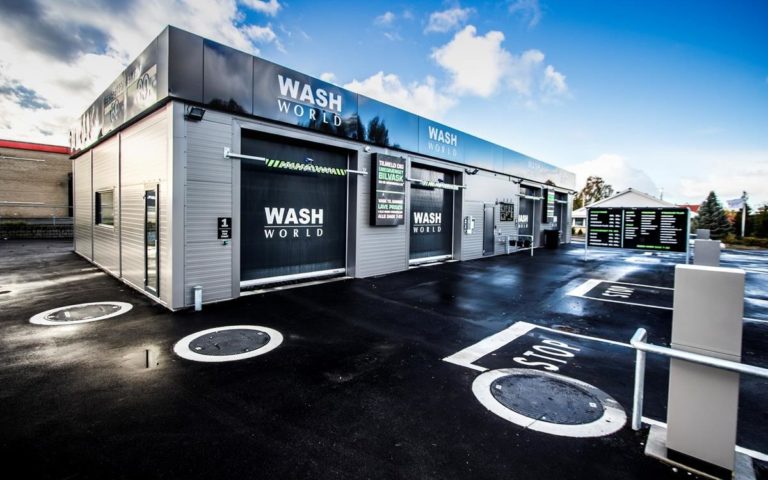
Engineering the future with Google Cloud Platform
Aker Solutions used Google App Engine and Google Cloud Storage to build a set of digital engineering tools and a collaboration room to leverage its institutional expertise and revolutionize its field development methods.
Google Cloud results:
- Unlocks, accesses and links data from all previous field development projects providing high value insight for future plans
- Drives efficiency with a suite of products automating and supporting all aspects of concept selection, searchable database of reusable methods, assets and data.
- Speeds up the decision-making process with fully featured digital simulations of oil and gas field components as well as economical model for NPV, risk and reliability.
- Improves collaboration with a single platform for multiple teams working on complex projects.
Aker Solutions traces its history back to 1841, when it was founded as the Aker Mechanical Workshop in Oslo, Norway. After making its name in shipbuilding and maritime work, Aker Solutions is now one of the world’s top energy service providers employing more than 14,000 people across 20 countries. Lending its expertise to oil, gas, and wind projects in some of the most challenging environments, the company prides itself on delivering safe, sustainable solutions that benefit customers around the world. Following the oil price crash that began in 2014, the energy industry as a whole had to face a new reality of lowered profits and reduced capital expenditure. By 2016, Aker Solutions saw this squeezing of resources as a perfect opportunity to revolutionize its oil and gas field development methods and digitize its entire process. To do that, it turned to Google Cloud Platform (GCP).
We needed to get the investment cost down significantly for developing new fields. We saw a digital solution, based on Google Cloud Platform, as the best way of achieving that as well as stepping up our sustainability.
Are Føllesdal Tjønn, Senior VP of Software Engineering, Aker Solutions
Building the field development process of the future
Traditionally, every field development project for an energy company is built from the ground up, independent of other projects that have gone before it with new teams, new materials, and new equipment. While this provides a bespoke precision to each project, it is also expensive, time-consuming and encourages inefficiency. By digitizing its field development process, Aker Solutions wanted to build up a bank of institutional expertise that could be accessed quickly and effectively and minimize the time and cost of field development.
Initially placed under the working title “Project Push” – the idea being that new field projects could be developed “at the push of a button” – Aker Solutions focused its efforts on a number of areas. Firstly, the company wanted a searchable database of digital information for each field development project. This would ensure that successful methods and techniques would live well beyond the life of any single project and could inform projects months and years down the line.
A second pillar of the Push Project was the concept of the “Digital Twin”. The idea was to have a digital representation of field assets that goes far beyond a simple 3D illustration. Aker Solutions wanted to measure and simulate every possible attribute of each field development project, all built within a rich and consistent data structure that would underpin several different applications. “Ideally,” says Are, “we would be able to simulate all asset operations before we physically start building.” This would help Aker Solutions and its customers make the right decisions much earlier in the process, saving significantly on time and money.
GCP for a scalable, flexible, high performance solution
In mid-2016, with the core objectives of searchability, reusability and expedited decision-making, Aker Solutions, together with customer AkerBP, began looking for ways to implement the Push Project. At the time, the company’s IT infrastructure was based on heavy duty enterprise solutions running off on-premises servers. While this had been perfectly adequate for its operations until then, Aker Solutions decided that only a scalable, cloud-based solution could fully deliver the ambitious results it had in mind for the digitization project.
For the latter half of 2016, Aker Solutions tested a number of solutions on the leading cloud providers, teaming up with cloud specialists Computas to help it navigate the cloud-based environment. “Having a local partner in Norway was key for us,” says Are, “and we were also very impressed with Computas’ expertise in agile methodologies like Scrum project management.” After taking the time to assess Aker Solutions’ requirements, Computas recommended Google Cloud Platform as the core of the new solution. “GCP is a platform that allows you to do things in a very quick way. You can get going without any hassle or time wasting,” says Rune Hagbartsen, Executive Director at Computas. “We were able to deliver solutions very quickly and the support form Google Norway was great.”
Another key advantage of GCP for Aker Solutions, was the ability to integrate with the company’s existing enterprise platforms and engineering solutions. Rather than replacing what was already working, Computas and Aker Solutions began building a new infrastructure for Project Push, leveraging the existing stack of the core business.
The use of Google Cloud Platform was an enabler for a deep change in the way software was developed. The Push Project started as a traditional IT procurement initiative but quickly evolved into a strong partnership between Aker Solutions, Aker BP and Computas. This partnership mindset allowed for a true agile development methodology supported by the fundamental flexibility of the Google Cloud Platform. With agility came the possibility to exploit opportunities, and the Push Project evolved from system development to the development of a platform housing the products required by the digitization process.
For the concept of the Digital Twin, Computas and Aker Solutions developed a family of applications built on Google App Engine: “That gave us the ability to open and deploy images very quickly, which helped us a lot,” says Filip Van Laenen, Computas Chief Engineer. The data pipeline was handled with Google Cloud Dataflow and the messaging requirements with Google Cloud Pub/Sub. The scaling ability of Google Cloud Dataflow is a game changer when you need to ingest and process millions of data entities and documents in order to make them searchable. The different products in the Push portfolio take advantage of Google Cloud SQL or Google Cloud Datastore depending on their specific requirements.
Computas developed a way of analyzing usage data using Google BigQuery, taking data from Google Stackdriver Monitoring. The team used Google Cloud Functions at various places to “glue” functionality together and to integrate with the existing infrastructure. Meanwhile, Google Cloud Storage was used to hold the millions of documents and static assets from new and older field projects. The ability to use a fully managed, elastic storage makes a real difference for an application platform using a lot of documents.
The ability to use REST APIs with Google Cloud Storage was very important for us. It’s a small thing but we saved a lot of work using REST APIs to upload files instead of implementing them ourselves.
Filip Van Laenen, Chief Engineer, Computas
Greater efficiency, higher quality outputs, improved collaboration
Two years since it first conceived the idea, Aker Solutions is part way through its massive digitization journey but has already seen remarkable results. “Overall”, says Are, “the new search and Engineering Assistant applications have already resulted in efficiency gains of around 20%. A typical topside project normally takes around a million hours, so cutting 200,000 hours is a very significant saving both for us and our customers,” he says. A product manager is now able to provide an estimate of an industry asset’s weight, such as an offshore platform, in just a few hours, down from days and weeks if they had used the traditional method. Are says that the impact of the changes made can be much bigger than the 20%. He likens the change to shifting from manually washing the dishes to using a dishwasher. “You can do so much more”.
When you improve your efficiency, you can work on the quality of the output. Whether that’s doing more iterations, analysis or looking for new solutions. We’ve not only saved time for our customers, but also improved the quality and safety aspects of our field development projects.
Are Føllesdal Tjønn, Senior VP of Software Engineering, Aker Solutions
As well as the efficiency gains, the Push Project has led to teams working more closely with each other. “When the information is all there on a single platform like the Engineering Assistant app, then it helps to keep everyone on the same page,” says Are. With everything on GCP, the company has been able to improve its security procedures for sensitive information. “Before people would use data by copying it from spreadsheets and take it away on their laptops,” says Filip. “Now, it’s held and secured in a database.” More qualitatively, with its emphasis on recording, searching and reusing data, Aker Solutions has brought a new-found objectivity to its field development methods.
“It’s helped us take the subjectivity out of our decision making, which helps us get to the right decisions earlier,” says Are.
Aker Solutions’ journey with GCP and Computas is far from over. With its oil and gas field development projects digitized, Aker Solutions is now preparing to bring its operations teams into the process. The company is currently exploring the suite of machine learning tools from GCP as a way of improving the indexing of its documents, to make searching for the relevant information even quicker than before. In addition, the company is checking how to use Google’s Vision API to help collate, categorize and analyze the millions of PDF documents that it deals with from partners and subcontractors for each project, saving time and minimizing the risk of errors from manual tagging. AutoML Vision is evaluated as a way to let the domain experts directly influence the machine learning required in the process. With the digitization process well underway, automation looks to be the next objective.
“The more we automate, the more we can see to automate,” says Are. “We’re excited about what we’ve achieved so far, but we also see a lot of potential in the journey ahead with GCP.”
Would you like to know more?
Send us an email and we will contact you


